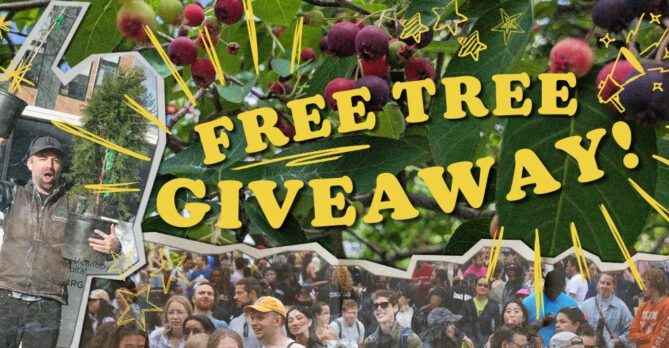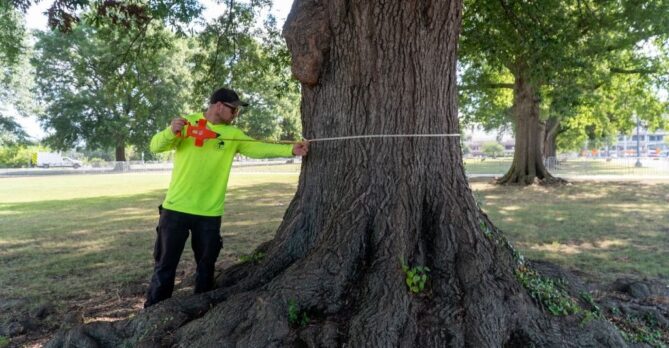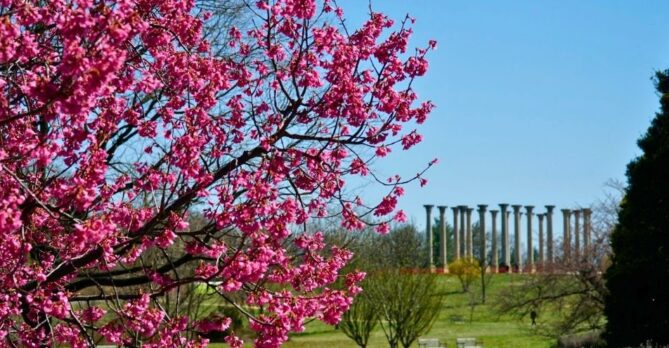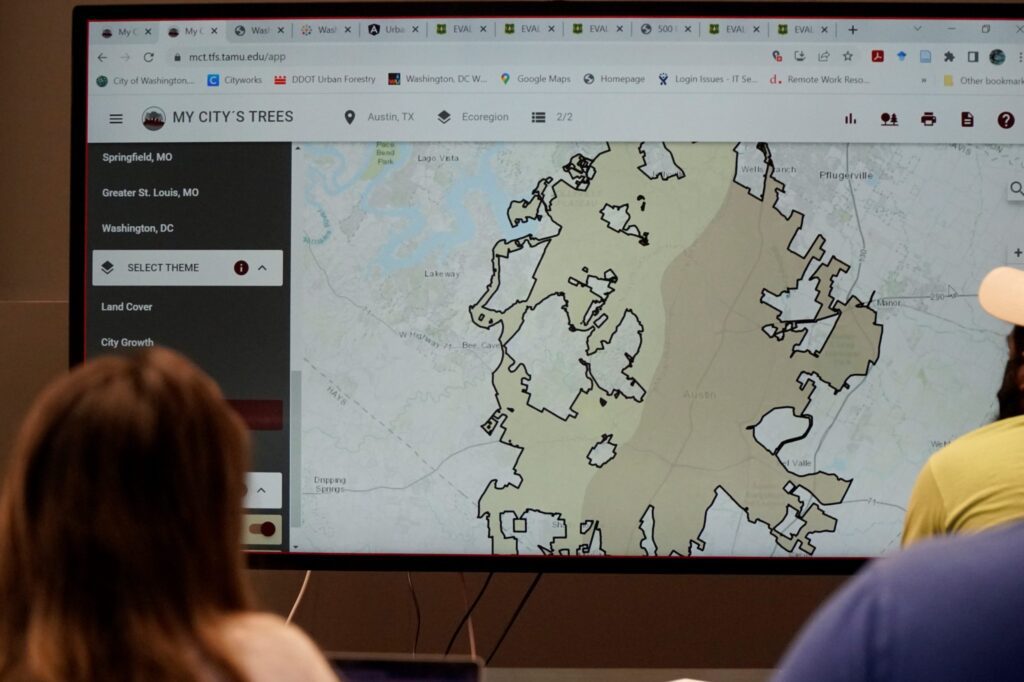
Have you ever wondered what the most popular tree in the District is? Or which Wards are benefiting the most from their trees? What about the relation between heat and trees? With My City’s Trees, we’re able to take an in-depth look at our urban canopy and gather specific information about the connection between people and trees.
My City’s Trees is an application that enables anyone to access Urban Forest Inventory and Analysis (FIA) data and produces custom analyses and reports of urban forests — public and private trees where people live, work, and play — in select cities across the country. A key feature of Urban FIA is the remeasurement of select locations every year, and this data will be added as it becomes available.
The program is accessible from your browser and easy to use! Once you set the location to DC, you’re able to view the map in 5 different themes: Land Cover, Population Density, Social Vulnerability, Heat Sensitivity-Exposure, and Wards. This will highlight and differentiate the map depending on the theme you choose; from there, you can use the ‘classes’ option to narrow down and specify the statistics you’re looking to find.
After deciding what theme and class to use, you can then pull inventory and species statistics. These stats will answer almost any questions you might have about the trees near you, whether you’re looking to know how many Red Maples are in your Ward or what percentage of the trees in DC are privately owned.
While the program is fun and easy for anyone to use and draw data from, it’s also a crucially important resource in seeing what areas are in severe need of trees and the benefits that they provide. For example, using the program, we can see that Wards 5-8 only hold 32% of the total trees in the District, and as a result, the people who live there only save $10.17 (in the economic value of pollution removal based on the number of cases of avoided health effects) while people in Wards 1-4 save $22.16 per person, per year.
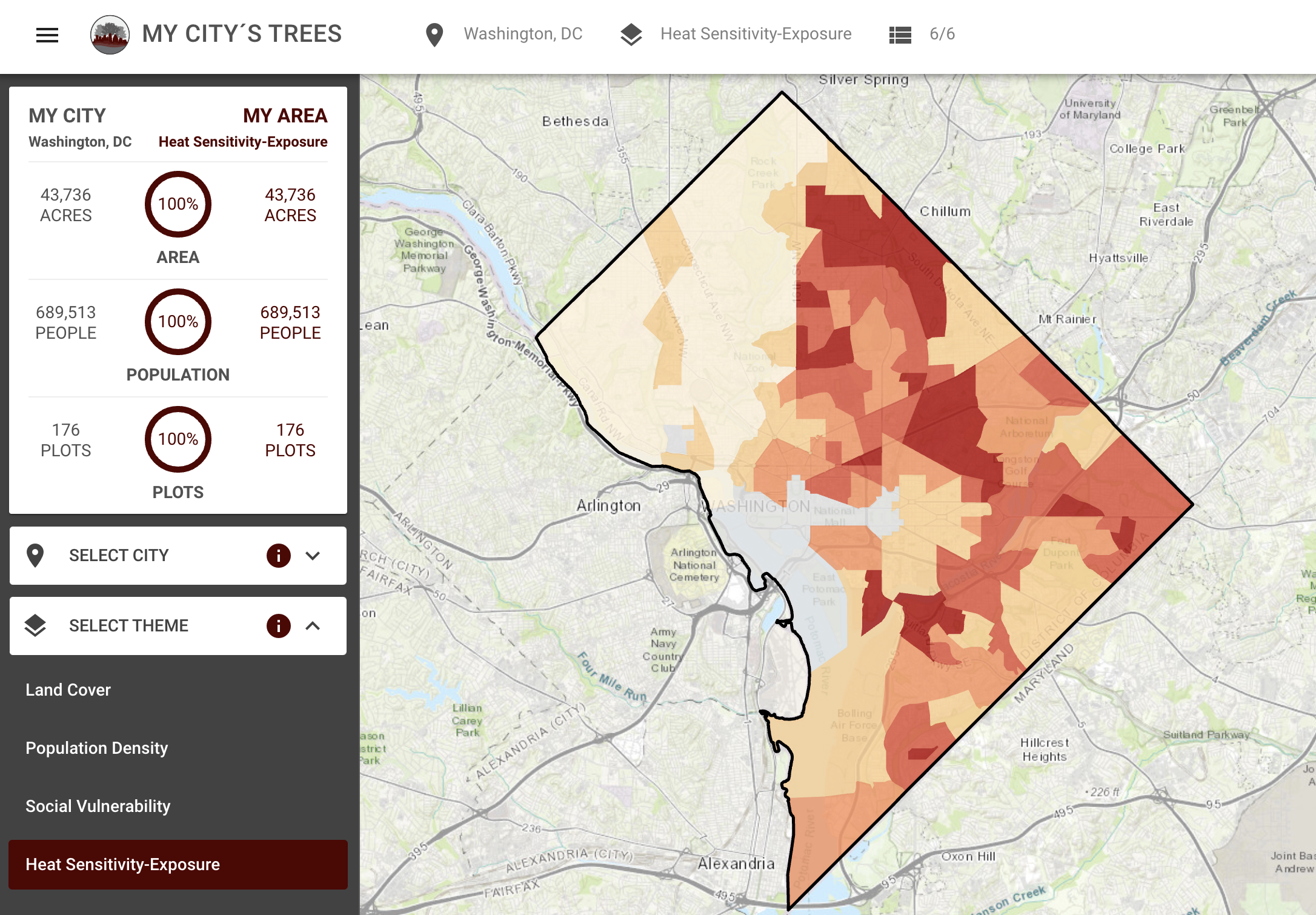
We can also use My City’s Trees to see that Wards 5-8 overlap with a lot of the more socially vulnerable areas in the District, so the individuals who could benefit the most from trees don’t have nearly enough. That’s just one of the reasons that here at Casey Trees, we’re working hard to bring more trees to these Wards specifically. Working towards tree equity so that everyone can enjoy the many benefits of having a dense tree canopy.
